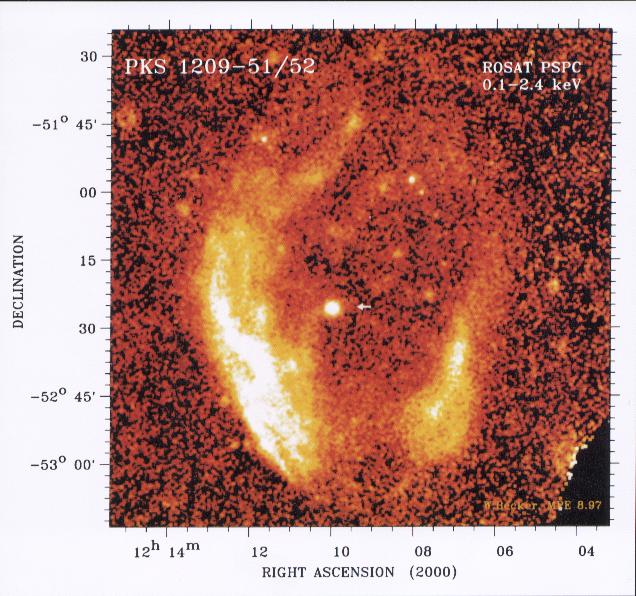SNR PKS1209

The supernova remnant PKS 1209-51/52 is about 150 light years across, while its age is estimated to be about 10,000 years. Its structure is attributed to an axially symmetrical ejecta of matter of the exploding star. This means that the star was rotating, and everything was symetric about its spin axis.
Near the geometrical centre of the remnant there is a compact X-ray source (marked by the arrow) which is neither detected in optical light nor at radio frequences. It is probability a neutron star created by the same explosion that created this lovely nebula. Its surface, at about three million degrees, is so hot that it is emitting exclusively X-rays. Just as rare as a neutron star in a supernova remnant is, their position in the sky is also unusual. They are 10 degrees above the galactic plane, which corresponds to a distance of more than a thousand light years. Since most stars lie within the galactic plane, like our Sun, it is rare to see them outside the plane of the galaxy.
Curator:
HEASARC Guest Observer Facility
Please use the Feedback link if you have questions on ROSAT.

